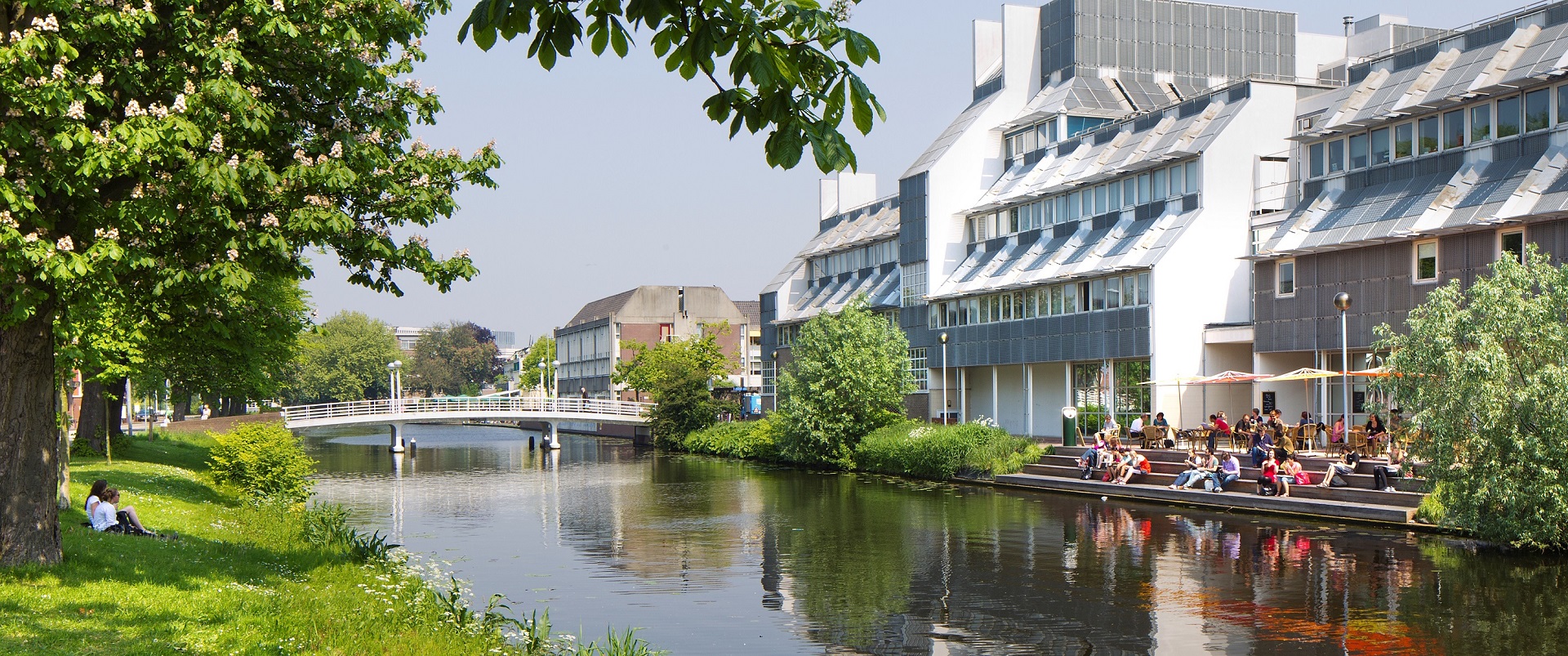A sustainable environment
Making public space more sustainable is considered very important in this project. The Humanities Campus will become a pleasant place to spend time, with lots of greenery. Here, people can relax and find coolness on hot summer days.
Mobility
The campus area on the Doelenzijde will become practically car-free. All logistics will enter the campus at one central location (Cluster Noord). From there, electric vehicles are used for transport. With this, the number of traffic movements will considerably decrease.
Water and greenery
The Humanities Campus will be connected with the Singelpark. The public area as a whole will become more green, and the campus square will be a green oasis for everyone in Leiden. In urban areas, heat stress is a big problem during the summer. This problem arises because buildings, roads and stone in general absorb heat. By using as much greenery as possible, the problem of heat stress in the campus area decreases. This makes it a pleasant place to meet each other and relax at all times.
-
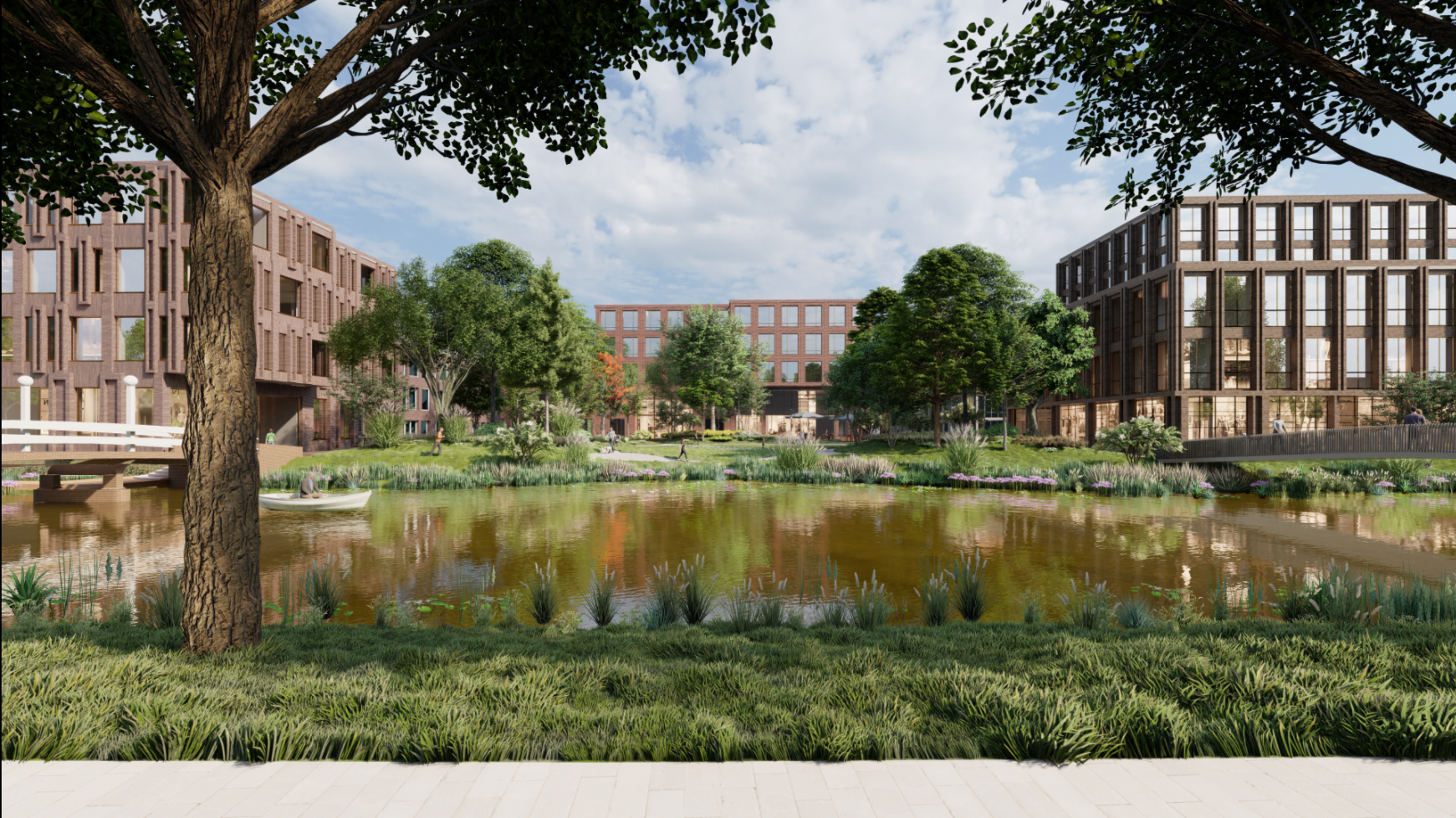
Artist impression: view on the new green heart from the Witte Singel © KCAP -
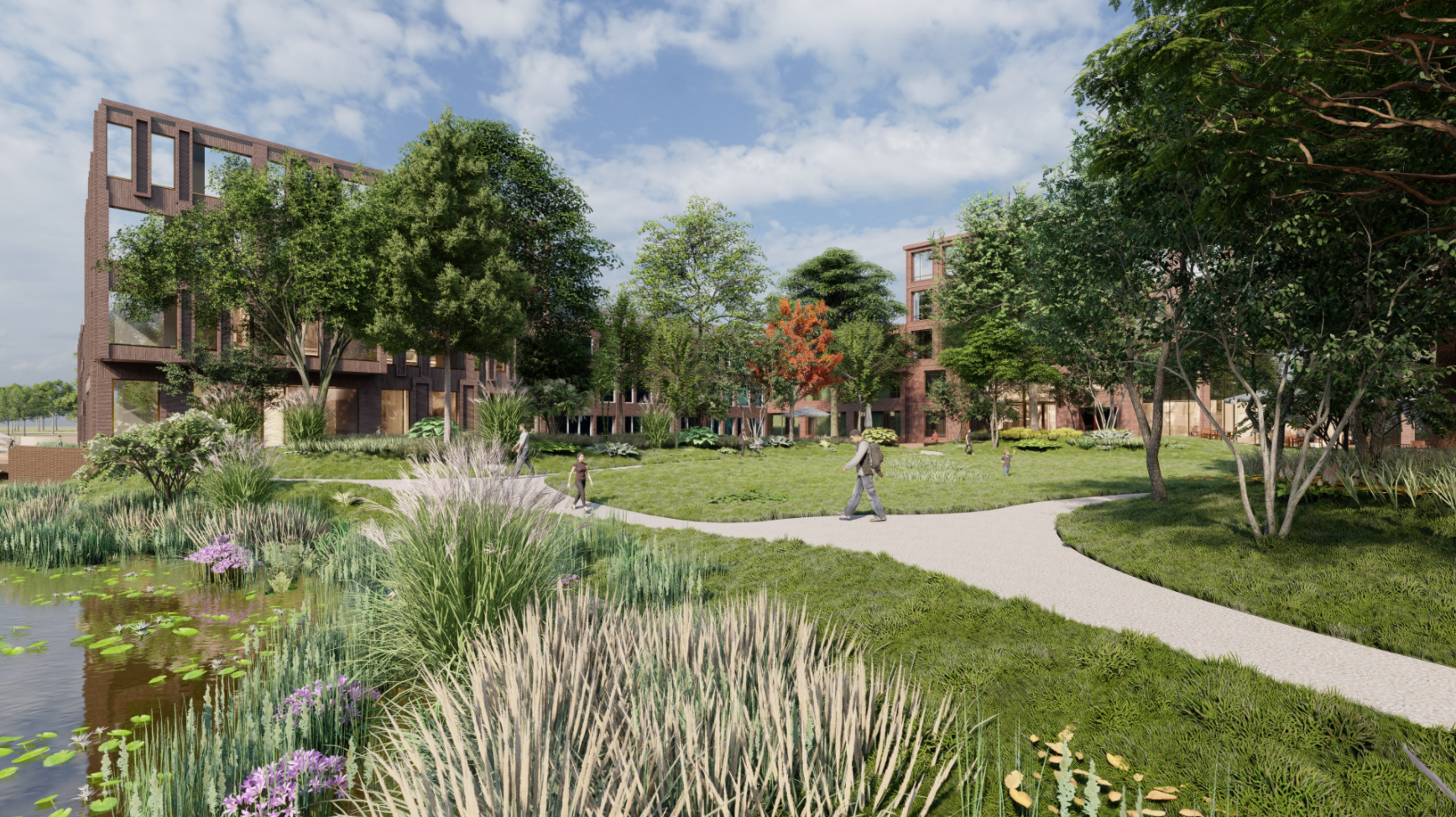
Artist impression: trees at the edges of the green heart (according to the principle of 'building green') in order to tackle to problem of heat stress © KCAP -
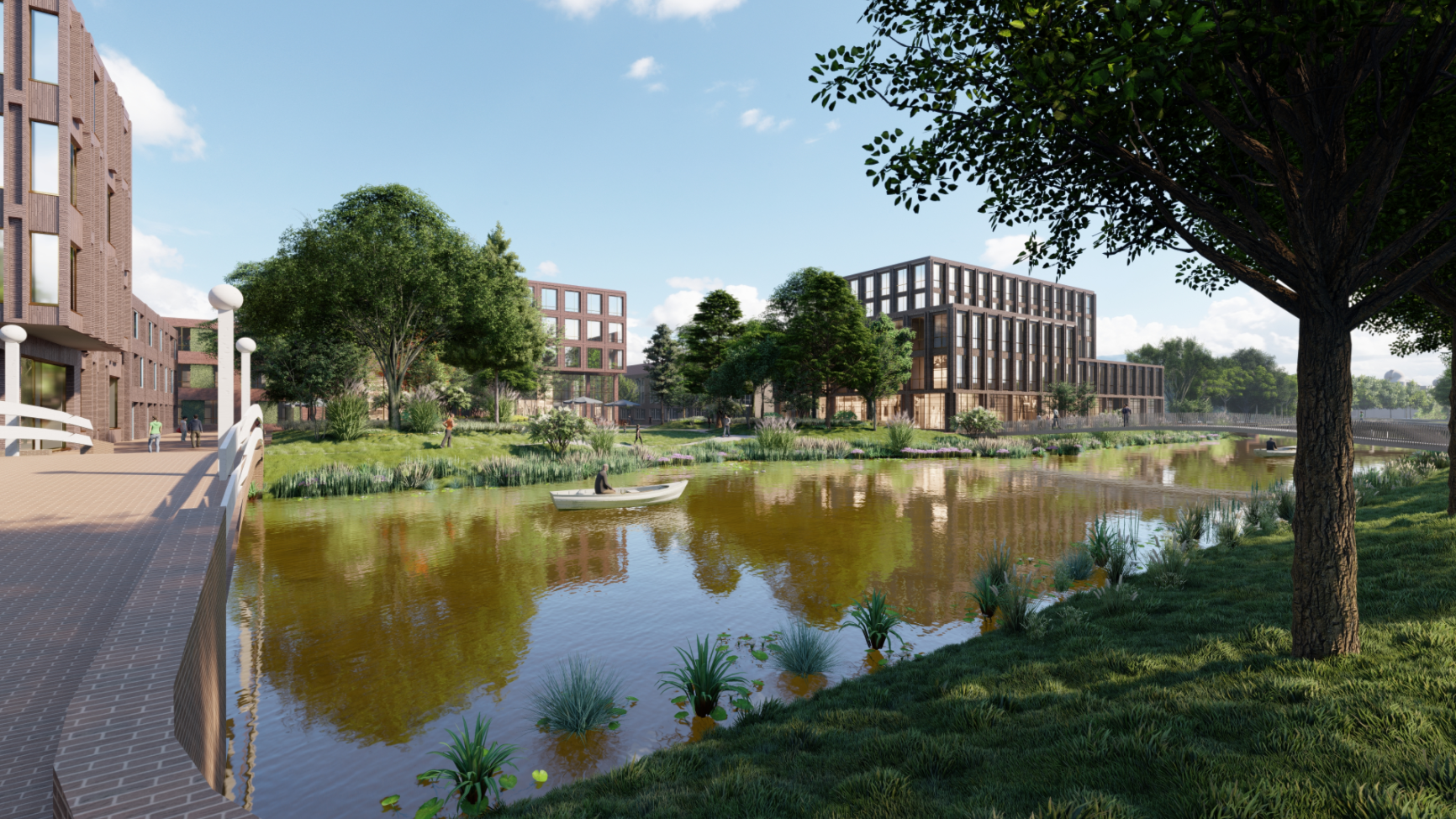
Artist impression: view on the campus from the Singel © KCAP -
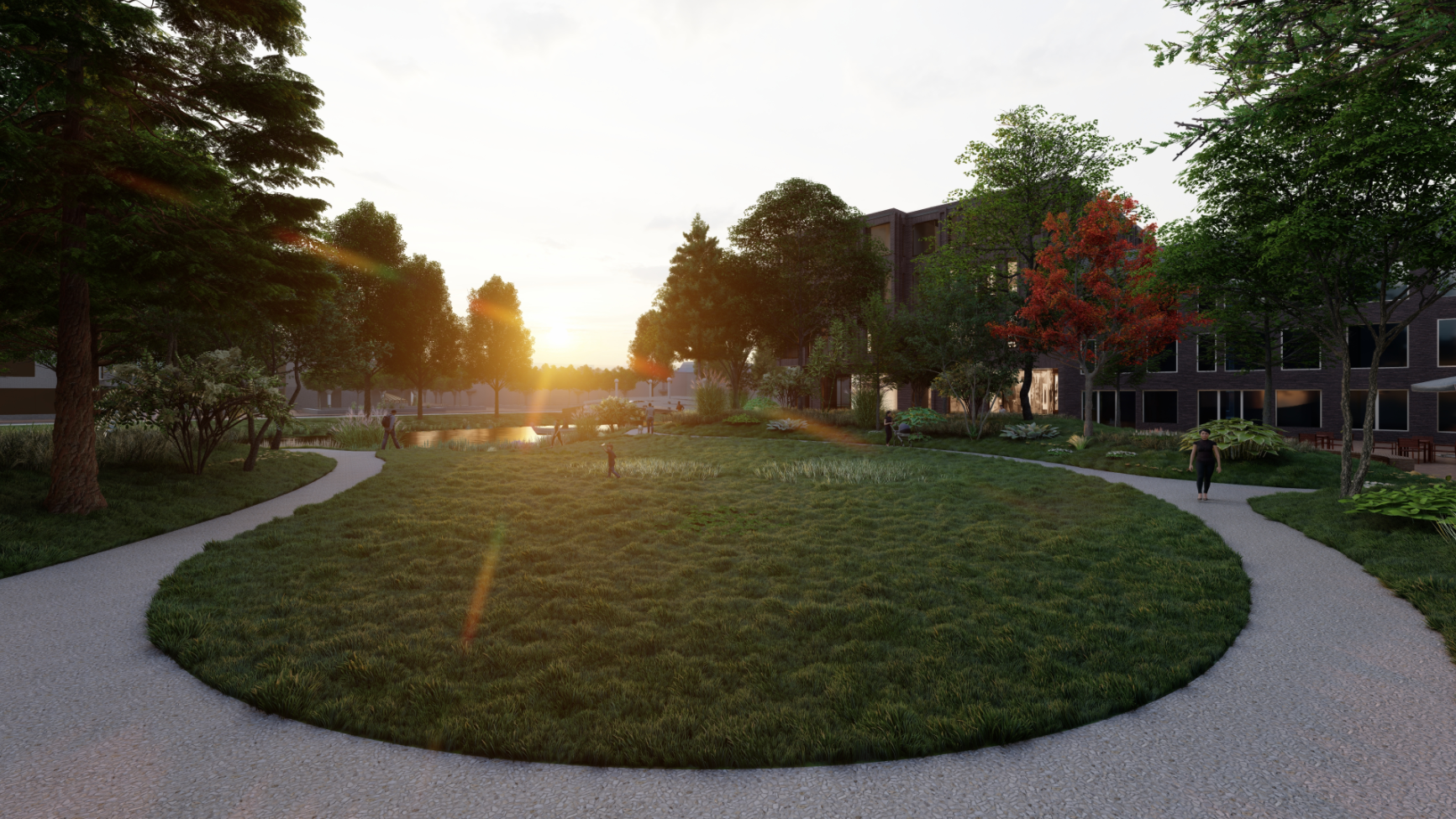
Artist impression: the new green heart of the campus © KCAP
Besides tackling the problem of heat stress, biodiversity is an imporant topic on the Humanities Campus. In this area, a variety of trees, plants and flowers will be planted. Some of these plants come from the collection of the Hortus (botanic garden).
Rainwater will be detained as long as possible, for example by using sedum roofs. A seperate drainage system makes sure that clean rainwater will not be combined with the wastewater in the sewer.

